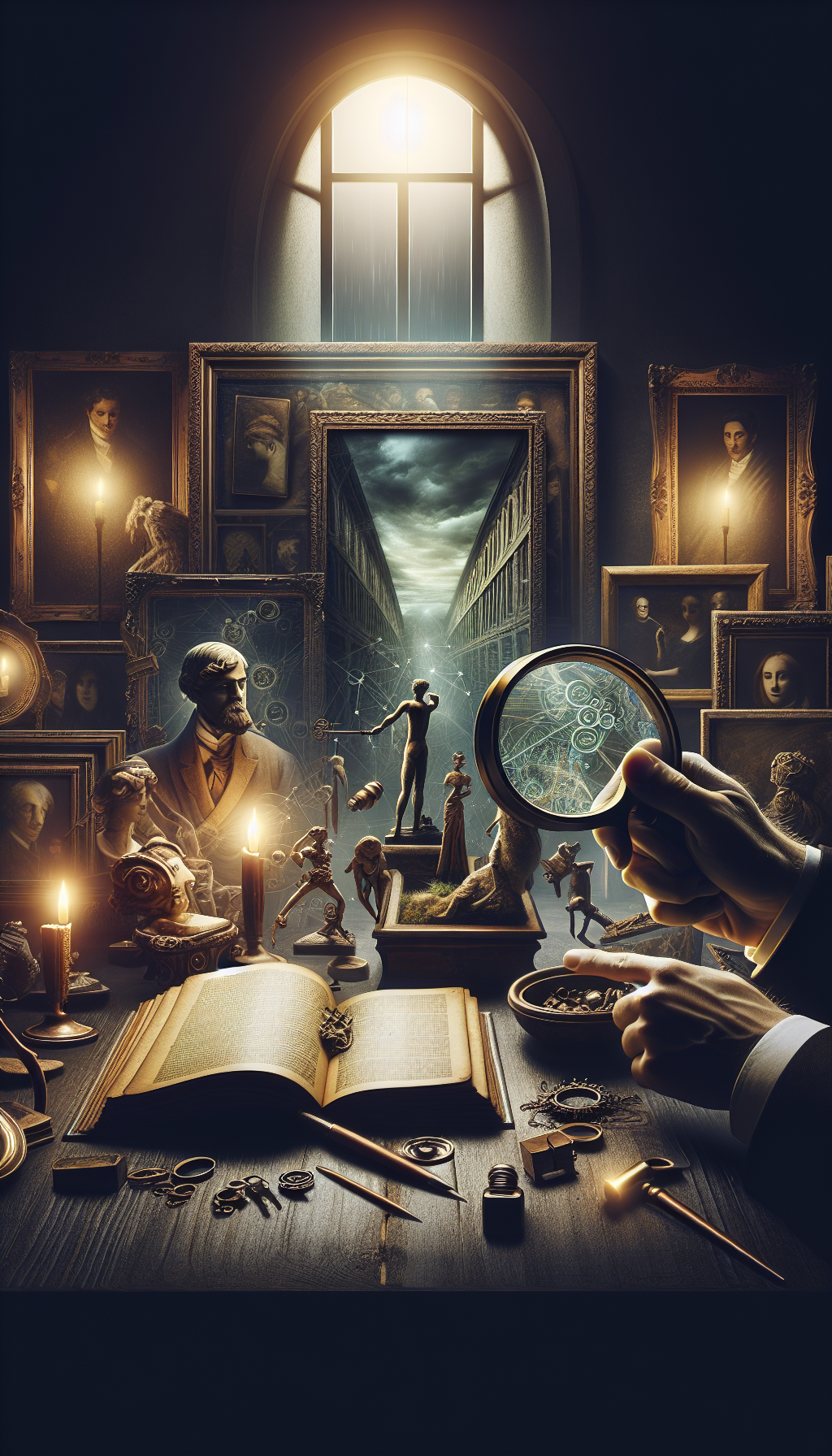A Metallic Custom Made Guitar Sculpture
Metal instrument sculptures sit at a fascinating intersection of contemporary sculpture, design, and music culture. A metallic custom-made guitar sculpture can be anything from a finely welded, studio-built artwork to a decorative, semi-industrial piece assembled from cut sheet and found parts. For appraisers and collectors, the challenge is to separate craft from art, understand materials and methods, and map the object to its most appropriate market. This guide breaks down what to observe, how to document it, where value tends to concentrate, and how to care for the piece without diminishing its integrity or resale potential.
What Appraisers Look For First
Identity of the maker
- Signatures and marks: Look on the base, back plate, or underside for a stamped or engraved monogram, full signature, studio mark, or date. Artists sometimes hide marks inside the body cavity if the sculpture is hollow.
- Provenance evidence: Commission paperwork, gallery receipts, exhibition catalogs, emails or messages detailing the commission, and in-progress studio photos. In a one-off custom sculpture, provenance can be the strongest value driver.
Materials and alloys
- Common metals: Mild steel, stainless steel, aluminum, brass, copper, bronze, and nickel silver appear frequently. Found-object builds may include gears, chains, fasteners, and actual guitar hardware.
- Quick clues:
- Magnet test: Strongly magnetic suggests carbon steel; weak/no magnet suggests stainless (austenitic grades) or nonferrous metals like aluminum, copper alloys, or bronze.
- Weight-to-size: Aluminum is markedly lighter; bronze and brass are dense; stainless is heavier than mild steel for similar volumes.
- Color and luster: Brass leans yellow-gold; bronze is deeper brown-gold; copper is reddish; stainless tends to a cool gray with uniform sheen; aluminum is pale, softer in reflectivity.
- Finishes: Bluing, heat patina, chemical patination, clear lacquer, powder coating, oil-wax blends, or paint. A subtle patina with sealed surfaces often indicates studio practice; bright powder coat hints at industrial finishing.
Fabrication and craftsmanship
- Joining methods: TIG welds are fine, precise beads with low spatter; MIG welds are more bead-like with uniform ripples; stick welds can be more irregular. Brazed joints flow gold-toned alloy at lower heat. Solder is soft and low-melting, rarely structural.
- Cutting and forming: CNC plasma or waterjet cuts produce crisp edges with tell-tale kerf; hand plasma or oxy-fuel cuts are looser. Hammer marks, planishing, roll-formed curves, or repoussé work indicate time-intensive methods.
- Cast versus fabricated: Cast bronze parts have sprue/vent vestiges and uniform surface microtexture; fabricated sheet shows seams, heat discoloration, and grinding marks. Many guitar sculptures combine both.
- Design and balance: Check the center of gravity and stability of the base. Cantilevered necks with mass at the headstock need proper internal armature; poor engineering risks creep or weld failure.
Intent and category
- Is it a fine art sculpture, a design/decor object, or a memorabilia-focused piece? The intended category directs market placement and comparable selection.
- Edition status: Unique, artist proof, or part of a limited run. Plates, certificates, or etched numbering clarify this.
Dating and Attribution: Reading the Object
Stylistic and cultural cues
- “Steampunk” builds with gears and gauges proliferated after the mid-2000s. Minimalist sheet-metal silhouettes feel more aligned with late 20th–early 21st century design sculpture.
- Incorporation of actual guitar elements (bridges, tuners) from specific decades can bound earliest possible dates.
Material and hardware timelines
- Fasteners: Torx screws appear more recent than slot or Phillips; metric hardware may indicate European sourcing.
- Weld technology: TIG became widely accessible to artists post-1970s; earlier builds are often oxy-acetylene or stick welded.
- Coatings: Durable polyester powder coats were uncommon in studio practice before the 1990s. UV-cured clear coats are late-20th-century onward.
Analytical aids (when warranted)
- XRF spectroscopy identifies alloys non-destructively—useful for distinguishing bronze from brass or verifying stainless grades.
- UV examination can reveal later overpaint or touch-ups on lacquer or paint.
- Microscopy at joints can differentiate factory-welded kits from hand-laid beads.
Attribution signals
- Consistent signature placement and letterform across a maker’s body of work.
- Recurring motifs (certain fret inlays rendered in metal, signature headstock shapes) tied to known artists.
- Paper trail: Commission emails, invoices, and shipping labels form a robust provenance dossier.
Condition, Conservation, and Risk
Common condition issues
- Corrosion:
- Steel shows red-brown rust; stainless may pit if chloride-exposed; aluminum forms white oxide; brass/bronze can exhibit green chloride corrosion (“bronze disease”) if chlorides are present.
- Structural stress:
- Cracks at heat-affected zones near welds, especially where a neck or headstock cantilevers.
- Loose mechanical fasteners if vibration elements are present.
- Coating failures:
- Flaking powder coat from poor surface prep; yellowing or crazing lacquer; wax/oil finishes drying to patchy sheen.
- Contact staining:
- Rubber feet and sulfurous felt can stain or corrode metal over time; dissimilar metal contact can foster galvanic corrosion.
- Corrosion:
Conservation approach
- Start dry: Dust with soft microfiber or a goat-hair brush. Avoid steel wool or aggressive abrasives that remove original surface.
- Stabilize, don’t refinish: Arrest active rust on steel with careful mechanical reduction and apply a microcrystalline wax. Do not power-buff patinated bronze or brass; once original patina is gone, historical value drops.
- Coating triage:
- Clear lacquer that has failed may be locally consolidated; complete stripping should be a last resort under conservator guidance.
- Powder coat repairs are difficult to blend; document losses rather than disguising them if valuation is imminent.
- Chemical caution:
- Avoid household acids or ammonia on copper alloys; do not use chloride-containing cleaners on stainless.
- Old solders may contain lead; avoid heat and use protective equipment.
- Environmental control:
- Stable humidity (40–55% RH) reduces corrosion risk; avoid coastal aerosols and pool environments with chlorides.
- UV is less harmful to metal than to coatings; still, keep painted or lacquered surfaces out of prolonged direct sun.
Handling and display
- Support under the center of mass; do not lift by the neck or headstock equivalent.
- Use inert pads (Ethafoam, polyethylene) between the sculpture and mounts; avoid raw wood with acidic tannins contacting metal.
- For outdoor display, choose appropriate alloys (316 stainless, silicon bronze, or properly sealed weathering steel) and plan for maintenance cycles.
Valuation: Markets, Comparables, and Story
Market segments
- Fine art sculpture: Represented artists with gallery and exhibition history; pricing reflects critical reputation, scale, and craftsmanship.
- Design/decor: High-quality fabrications sold through design galleries or boutiques; strong focus on finish and interior placement.
- Music and memorabilia crossover: Buyers value the subject matter and connection to music culture; signed pieces by notable musicians or made for prominent venues command premiums.
Price drivers
- Maker reputation: Established sculptors with museum showings or strong secondary-market results outperform anonymous or hobbyist makers.
- Uniqueness and complexity: One-off, intricately fabricated pieces with refined welds, formed surfaces, and integrated hardware beat flat silhouette cut-outs.
- Materials and scale: Bronze and stainless often command more than mild steel; monumental works and illuminated/kinetic builds bring higher prices due to engineering and installation demands.
- Provenance and story: Commissioned for a music festival, displayed in a well-known venue, or gifted to a notable musician—narratives widen the buyer pool.
- Condition and originality: Intact original patina or coating, uncompromised welds, and minimal later alterations signal quality.
Comparables and approach
- Look for like-with-like: Match alloy, fabrication method, complexity, size, and market channel.
- Separate “kit” or repeated laser-cut pieces (often sold in multiples) from unique builds.
- Expect wide ranges: Decorative steel guitar silhouettes might trade in the low hundreds; signed studio bronzes with exhibition history can reach the mid four to five figures. Document the rationale behind your range, not just the numbers.
Selling venues
- Artist or gallery direct sales support higher retail estimates when the artist is active.
- Curated auctions and themed sales (music, design, contemporary sculpture) reach targeted audiences.
- Private sales thrive when provenance ties to music culture are strong; prepare a well-illustrated dossier.
Documentation and Provenance Building
Photography
- Full views front, back, left, right; obliques to show depth; base and underside; macro shots of signature, welds, and any damage.
- Shoot under raking light to reveal surface topography and finishing marks.
Measurements and specs
- Height, width, depth, and weight; base dimensions and mounting method; electrical specs if illuminated.
Inscriptions and records
- Transcribe all marks exactly (including punctuation). Note location, technique (engraved, stamped, painted), and any dates.
- Compile invoices, emails, sketches, and studio communications into a single, chronologically ordered PDF.
Process evidence
- Keep any progress photos or videos from the maker; these strongly support authenticity and craft value.
- Record materials from the artist (alloy types, coating names), as these inform conservation and insurance.
Ethics, Reproductions, and Red Flags
Repetition without variation
- Identical plasma-cut or waterjet silhouettes with identical weld patterns likely indicate mass production. Limited editions should be numbered and documented.
Cast-from-original copies
- A fabricated original that later appears as cast replicas may show softened edges, uniform surface texture, and molded-in “welds.” Compare tooling marks carefully.
Brand and IP concerns
- Sculptures replicating trademarked guitar headstocks or logos may face intellectual property issues. Appraisers should note, not endorse, any infringing elements; this can affect marketability.
Misleading finishes
- Artificial “aged” patinas applied over brand-new metal are acceptable as an artistic choice, but should be disclosed. Aggressive simulated wear to imply age is a red flag.
Appraiser’s Practical Checklist
Identify and document
- Record maker, title (if any), date, marks, dimensions, and weight.
- Photograph all sides, base, and details; capture signatures and joins.
Assess materials and construction
- Perform a magnet test; note alloy indicators and finishes.
- Describe fabrication methods (weld types, cutting, forming, casting elements).
Evaluate condition and stability
- Check for corrosion, coating failure, cracks at welds, and base stability.
- Note any prior repairs or repaints.
Establish provenance
- Gather purchase/commission records, correspondence, and exhibition history.
- Confirm edition status and any certificates.
Build comparables and market context
- Select like-with-like comps by maker, medium, scale, and venue.
- Adjust for condition, uniqueness, and provenance strength.
Provide care and risk guidance
- Recommend preventive conservation steps; caution against refinishing.
- Note installation and shipping considerations.
Conclude with value opinion
- State intended use (insurance, fair market, resale) and valuation approach.
- Provide a reasoned range with supporting notes.
Shipping and Installation Notes
Packing
- Immobilize protrusions (neck, headstock) with custom-cut Ethafoam or closed-cell supports; avoid tape on finished surfaces.
- Wrap in acid-free tissue or inert plastic barrier where appropriate; prevent metal-to-metal contact.
- Crate with rigid bracing; maintain upright orientation if balance is a concern.
Transit risks
- Vibration can loosen fasteners and stress welds; use shock-absorbing mounts.
- Temperature swings affect coatings; allow acclimatization before uncrating.
Installation
- Anchor bases securely; consider seismic restraints in at-risk regions.
- For outdoor placements, plan inspection and maintenance intervals in writing.
FAQ
Q: How can I tell stainless steel from aluminum without lab equipment? A: Try a magnet first; aluminum is non-magnetic and much lighter by feel. Stainless may be weakly or non-magnetic depending on grade but will feel denser than aluminum. Examine the surface: stainless often has a cooler gray, tighter grain; aluminum is softer, more silvery. When in doubt, an appraiser can confirm via XRF.
Q: Should I polish or repaint my guitar sculpture before selling? A: Generally, no. Original patina, weld coloration, and finish are part of the artwork’s value. Over-polishing or repainting can erase evidence of craft and reduce desirability. Stabilize active corrosion and leave cosmetic refinishing to a conservator with a clear rationale.
Q: Can a metal guitar sculpture live outdoors? A: Only if materials and coatings are suitable. 316 stainless and silicon bronze fare well with periodic maintenance; mild steel requires robust coatings or weathering steel design. Expect a maintenance plan (cleaning, waxing/sealing) and faster wear in coastal or high-chloride environments.
Q: Do moving parts or real guitar hardware increase value? A: They can, if well integrated and structurally sound. Kinetic elements, lighting, or authentic hardware add complexity and appeal, but poor engineering or rattling assemblies detract. Quality of execution matters more than the mere presence of components.
Q: What’s the biggest value driver for a custom guitar sculpture? A: Maker identity and provenance. A documented commission by a known artist, with clear studio records and exhibition history, will command a significant premium over an anonymous, decor-oriented piece—regardless of size.
A metallic custom-made guitar sculpture rewards close looking. By documenting the maker’s hand, understanding the metal and methods, respecting the surface, and placing the work in the right market, appraisers can produce valuations that are defensible, nuanced, and useful to clients.



